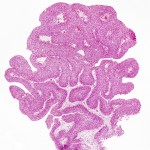BCG treatment for high risk non-invasive bladder cancer is the most effective intravesical treatment for bladder cancer. It is relatively inexpensive. Because it’s a live attenuated strain of bacteria, there are risks associated with administration.
[col type=”one-fourth”]
[/col]
[col type=”three-fourth last”]However, it appears that the risks are often driving care decisions without full consideration of the benefits. The side effects of treatment can be difficult to manage; in the world of Yelp online reviews, physicians are hesitant to expose themselves to potential of adverse outcomes. Yet the patients who are most likely to have side effects are also the ones who have the most to gain from BCG. Similarly, the use of mitomycin C in post-operative settings is not used as widely as to maximize the potential benefits. (The economist in me says: conceptually it is worthwhile to administer BCG as long as the marginal benefits of BCG exceeds the marginal risks)[/col]
The hesitance to administer mytomycin C and BCG is most evident in patients who need it the most – the elderly and those who are not well enough to be able to undergo cystectomy or to tolerate harsh chemotherapy and radiation therapy should their disease progress or recur. These are the patients who can be expected to derive the most ROI from BCG treatment.
BCG remains the most effective treatment for non-muscle invasive bladder cancer other than radical cystectomy. The studies show that the benefits of BCG are incremental with maintenance BCG providing increased benefits that is durable after the 3 year course of maintenance BCG.
The fact is that few patients in randomized studies managed to complete the entire maintenance course of BCG. Yet they reaped the benefits even if they could not tolerate an entire course of BCG,
Clinical Pearl: The induction course of BCG is started 3-6 weeks after TURBT once patient’s postop symptoms (urgency/frequency) are tolerable. Many patients cannot tolerate weekly doses – due to intervening UTI or symptoms. Because BCG works by stimulating the immune system, essentially each dose works like a vaccine booster, it’s likely that it is OK to skip a week or a few and continue when the patient can tolerate more BCG.
Reduced doses of BCG are better than no doses. The evidence shows that reduced doses are fairly effective.
The maintenance course of BCG as done in randomized studies (and given by Dr. Lamm): Maintenance is given weekly for 3 weeks at 3, 6, 12, 18, 24, and 36 months. The dose can be reduced to 1/3 in patients who are symptomatic. An option to provide additional doses beyond 3 years is reasonable based on the biology of the disease however high quality long term studies are not available yet.
Latest Recommendations for BCG use:
http://www.ncbi.nlm.nih.gov/pubmed/23665400
I call for a @BCGAwarenessDay!
